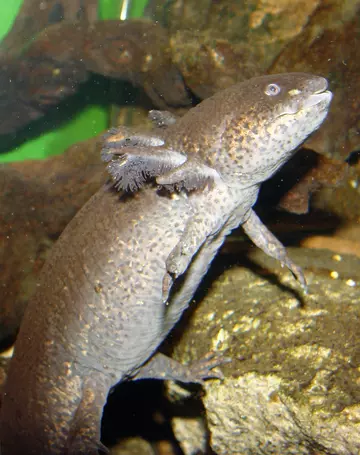IUCN status
Critically Endangered
Scientific name
Ambystoma mexicanum
Order
Caudata
Type
Amphibians
Family
Ambystomatidae
Region
Mexico
Habitat
High altitude lakes
Axolotl facts
- Axolotls retain larval features into adulthood.
- Axolotls have large external gills for oxygen exchange. They have a large tail which helps them swim.
- Axolotls have an incredible ability to regenerate digits and limbs and even parts of their brain. This amazing ability has made them a focal species for human medicine and research.
- Almost extinct in the wild, oddly they are one of the most commonly bred amphibians in captivity.
- The name axolotl is thought to have originated from the Aztecs, derived from two words: atl, meaning "water", and xolotl meaning “monster”.
- They live permanently in water, in the wetlands and canals associated with Lake Xochimilco and Lake Chalco, adjacent to Mexico City.
- Once eaten as a delicacy in Mexico City, they are now a protected species in Mexico and Critically Endangered in the wild.
What do axolotls eat?
Invertebrates and small fish.
Axolotl habitat
High altitude lakes and canals
Where do axolotls live?
Lake Xochimilco and Lake Chalco, central Mexico.

Axolotl threats
Land drainage and population growth of Mexico City. Poor water quality as a result of sewage disposal in the Xochimilco and Chalco lake complex. Invasive species.
Axolotls at the Zoo
We don't have axolotls at London Zoo currently, but we do have the Lake Patzcuaro salamander which is larger and very similar.
Axolotl conservation
Our herpetology team was involved in the development of a conservation action plan for axolotls, and we also supported three EDGE working on three other closely related salamanders in Mexico (Taylor’s salamander, granular salamander and Lake Lerma salamander). Our herpetology team and vets have also pioneered new treatments for diseases of axolotls.
